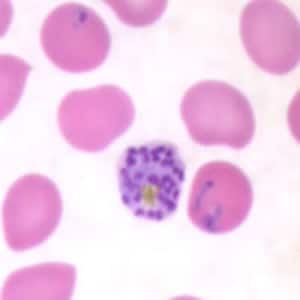The Life Cycle of Plasmodium
The life cycle of Plasmodium takes place in two distinct environments, a human host and a female Anopheles mosquito.
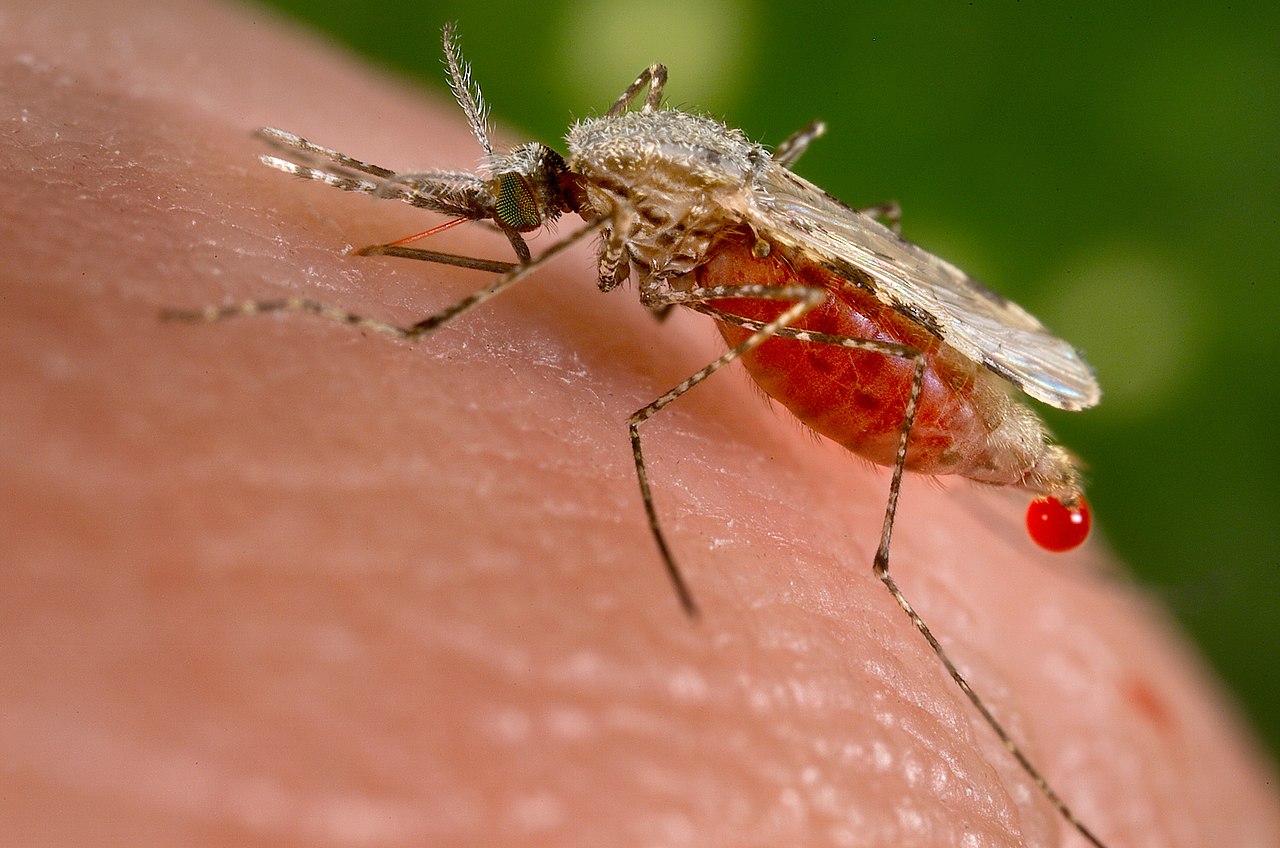
As shown in the graphic below, the life cycle of Plasmodium begins with the injection of sporozites from the mosquito’s salivary glands while the mosquito takes a blood meal from the human host. It then infects a host liver cell, where it forms a schizont that will then rupture, releasing merozites which will then begin to infect the red blood cells.
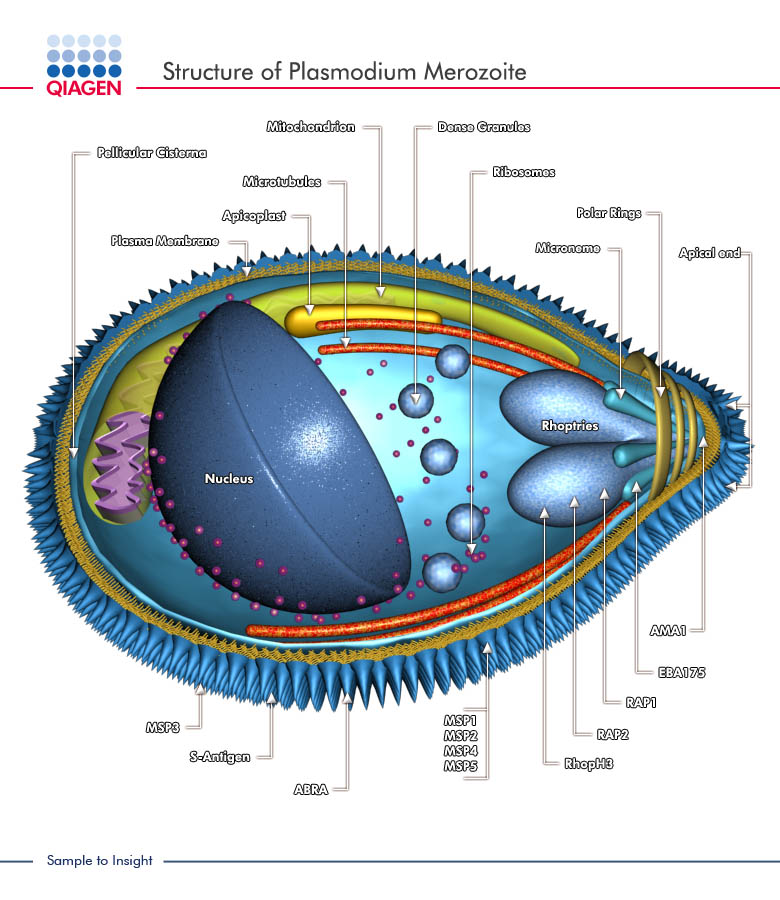
Once the blood cell has been infected, the ring structure known as a trophozite is formed. From here the trophozite can either mature and form another schizont (asexual reproduction), or it can differentiate in to gametocytes.
From here a blood parasite (the female Anopheles mosquito) is required to ingest the male and female gametocytes (termed microgametes and macrogamtes respectively) for the life cycle to continue. Once ingested and brought to the mosquito’s stomach, the gametocytes begin the sporogonic cycle.
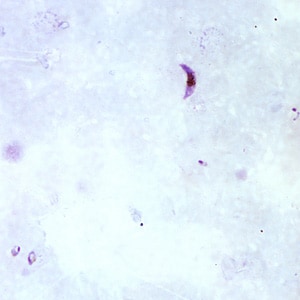 Gametocytes in thick blood smear
Gametocytes in thick blood smear
During this cycle the male (micro) gametes penetrate the female (macro) gametes, forming a zygote (sexual reproduction). The zygotyes develop in to ookinetes which are an elongated, motile form of the Plasmodium. These ookinetes then move to the gut wall of the Anopheles mosquito, where they mature and develop in to their final form, the oocysts. Finally, the cycle is completed by these oocysts rupturing to release sporozoites which move to the salivary glands so that they may infect a human host upon the next blood meal.
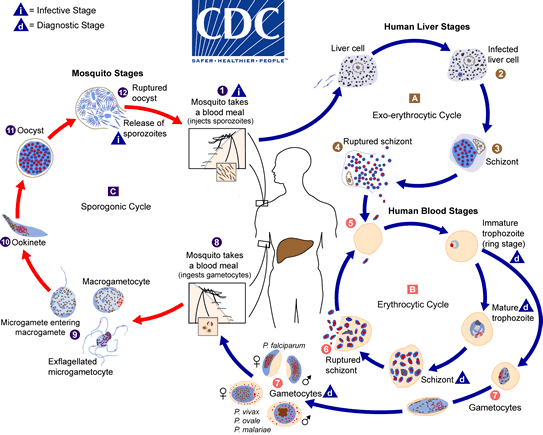
Graphic of Plasmodium Life Cycle
Plasmodium is heterotrophic, obtaining its energy requirements from its host cells. Plasmodium does not require special nutrition to carry out its life cycle, only specific environments.
Two informative videos on the life cycle of Plasmodium!
